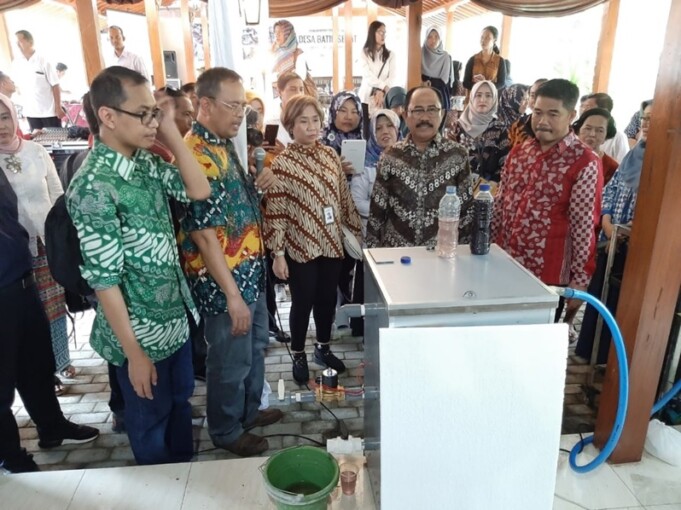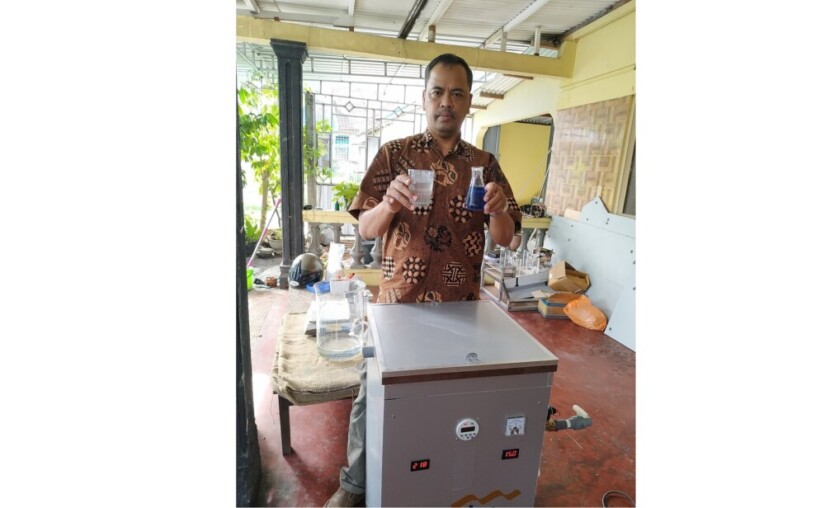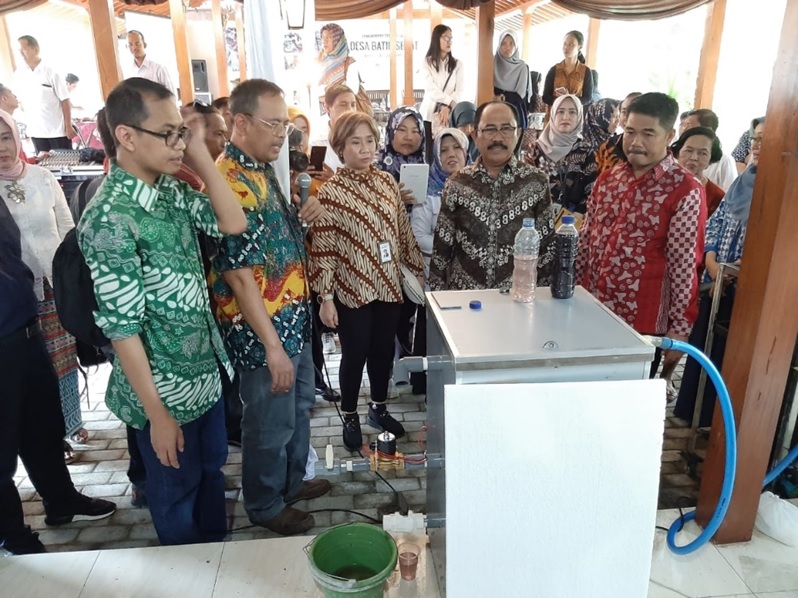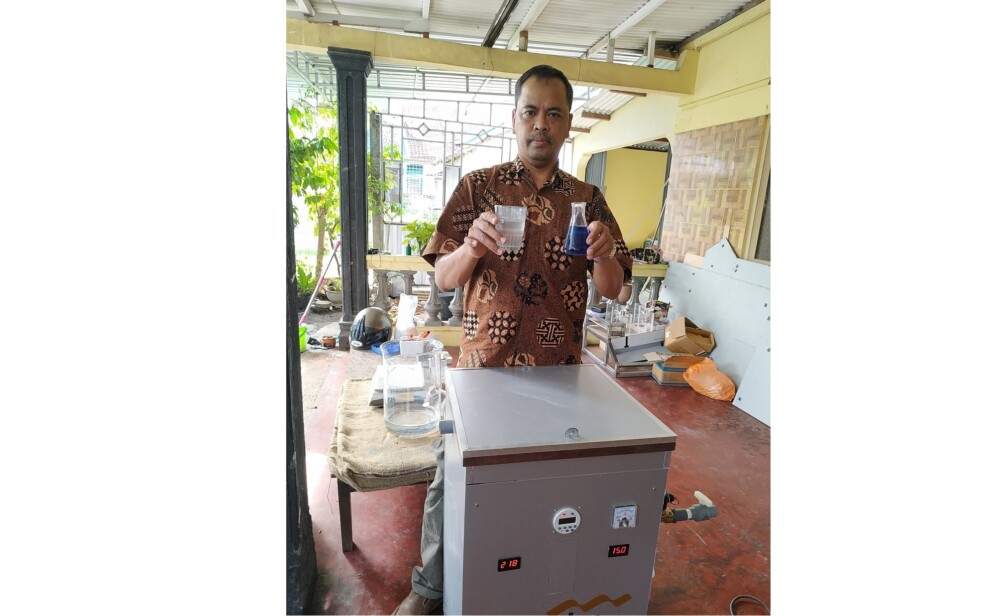A lecturer who at once is a researcher at Chemical Department, Faculty of Mathematics and Sciences Universitas Gadjah Mada (UGM) success in developing a piece of processor tool for Batik Waste. It is very functional to make wastewater produced conforms normal standard threshold.
The tools created by the research of Dr. Roto and this team assisted batik artisans in managing batik waste. This could be so beneficial because so far the waste management is still done manually in traditional ways by the batik artisans, such as distillation models, filtration with sand and fibers, and by being deposited in several stages that cannot produce clear water. However, the presence of this tool is an effective solution to the batik waste problem and creating a healthy environment.
“Batik waste treatment so far has only done by filtering solids, while chemicals and dyes are not processed into the ground and if it enters the well, it can endanger public health,” said Roto, when met at FMIPA on Thursday (1/30).
Roto explained the tool that he developed with Dr. Fean D Sarian who is a researcher from Kochi University of Technology Japan and Dr. Ahmad Kusumaatmaja from Physics Department of FMIPA UGM can destroy dyestuffs, especially small and medium batik industry waste. The process of crushing the waste is done chemically through the electrolysis method.
“From the process, we see that it produces water which is close to the normal standard threshold, namely the content of the dye from 100 mg / L to <0.1 mg / L,” he explained.
The water from this waste treatment can be reused for the next batik process. Besides, treated wastewater is safe to be discharged into waterways because it meets the quality standards for industrial waste which include BOD, COD, TDS, pH, heavy metal content and others.
This tool is named Electro-DE (Electrolytic-Dye Eater). It is designed based on electrochemical technology using special electrodes. Also, the device is equipped with radiation to accelerate the breakdown of dyes into environmentally friendly compounds.
The tool is currently being used by batik artisans in a batik production house in Gulurejo, Lendah, Kulonprogo. The prime launch was carried out directly on January 22, 2020, by the Regent of Kulon Progo, Sutedjo, in the launch of the Healthy Batik Village FKKMK UGM program.
This machine is made to be easily moved because it was designed in a portable form measuring 40x50x60 cm. The operation of the tools can be done in automatic or manual mode and requires the power of 500 watts.
This machine is capable of accommodating 50 liters of liquid waste with a maximum dye concentration of 100 mg / L. Within a day, the machine can operate non-stop up to 8-10 hours with the ability to process 500 liters of waste per day.
“Once waste treatment process takes about 1 hour to produce water that is close to the standard threshold,” he explained.
The tool developed since 2017 has been registered with a patent and is targeted to be commercialized soon in 2020.
“If one unit is mass-produced, it will be around Rp. 80 million. Well, it can be used for the next 20 years,” he said
He said that the research development of batik waste processing machine is currently still being carried out. Efforts of improvement are carried out in several ways, one of which is the use of solar panels for energy supply.
Reporter: Ika
Translator: Sasa






